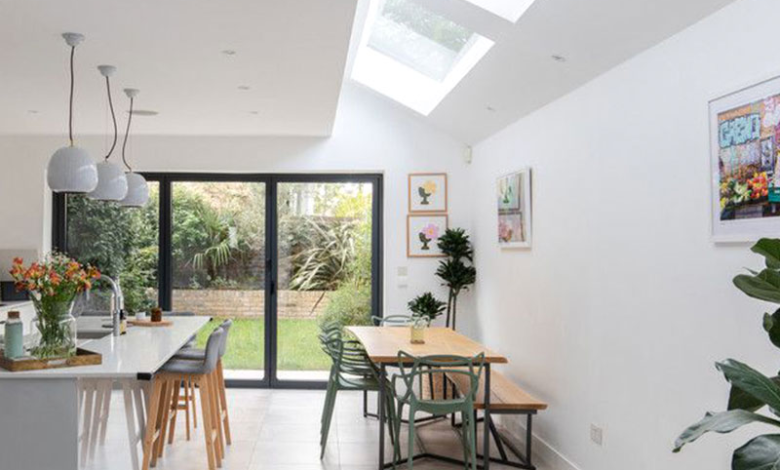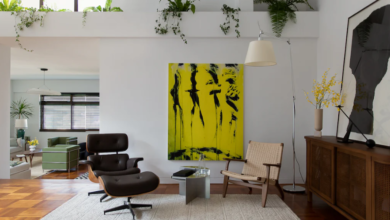Skylights on Pitched Roofs: Complete Guide to Design, Installation, and Benefits

Natural light is one of the most valuable design elements in any home. It lifts the mood, reduces the need for artificial lighting, and creates an atmosphere of warmth and openness. One of the most effective ways to bring daylight into a property is by installing skylights on pitched roofs. Unlike traditional vertical windows, skylights capture sunlight from above, brightening rooms even in areas where conventional windows cannot be fitted. Whether used in loft conversions, bathrooms or hallways, skylights for pitched roofs can completely transform a space both functionally and visually.
What Are Skylights on Pitched Roofs?
A skylight is essentially a window installed within the roofline of a building, designed to channel light directly into the interior. On pitched roofs, which slope at an angle rather than lying flat, skylights must be carefully designed to fit the roof structure. Their angled position allows them to capture maximum sunlight while enabling rainwater, snow and debris to drain away more efficiently than on flat roofs.
Skylights for pitched roofs are available in a variety of styles, including fixed designs that remain closed, ventilated options that open for airflow, and advanced electronic models that can integrate with smart home systems. They are typically made with strong, durable materials, often featuring double or triple glazing with protective coatings to manage heat transfer and improve energy efficiency.
See also: How Rewiring Improves Home Safety and Efficiency
Benefits of Skylights on Pitched Roofs
Installing skylights on a pitched roof offers a range of practical and aesthetic advantages for both new builds and home renovations. From boosting natural light to improving energy performance, they can dramatically change how a space looks and feels.
Enhanced Natural Light
The most obvious benefit of skylights is the dramatic increase in daylight. Rooms that would otherwise feel dark or require constant artificial lighting become bright and welcoming. Their elevated position enables sunlight to enter throughout the day, regardless of the orientation of the external walls.
Improved Energy Efficiency
By reducing reliance on artificial lighting, skylights can help lower electricity costs. Modern designs also include energy-efficient glazing that limits heat loss during winter and reduces solar gain in summer, keeping indoor temperatures comfortable all year round.
Ventilation and Air Quality
When fitted with an opening mechanism, skylights provide a natural source of ventilation. As warm air rises, opening a skylight allows hot, stale air to escape while cooler air enters through lower windows. This is especially beneficial in kitchens, bathrooms and lofts, where heat and humidity tend to build up.
Architectural and Aesthetic Appeal
Skylights do more than improve function; they also enhance a property’s aesthetic appeal. The movement of natural light throughout the day adds character and depth, while overhead glazing brings a sense of space and luxury. Even compact rooms can feel larger and more open.
Health and Wellbeing
Exposure to natural daylight has been shown to improve mood, sleep patterns and overall wellbeing. Installing skylights on pitched roofs maximises these benefits by ensuring living spaces remain bright and uplifting throughout the day.
Types of Skylights for Pitched Roofs
There are several styles of skylights suitable for pitched roofs, each offering distinct advantages.
- Fixed Skylights: Non-opening models that provide light only. They are ideal for rooms with sufficient ventilation but needing more daylight.
- Ventilated Skylights: These can be opened manually or electronically, offering both light and airflow, perfect for bathrooms or kitchens.
- Tubular Skylights: Also called sun tunnels, these use a reflective tube to channel light from a small roof dome into interior spaces, ideal for smaller or awkward areas.
- Roof Windows: Larger openings that act like conventional windows, providing both light and views. Some can even serve as roof access points.
- Custom Skylights: Bespoke designs created to fit unique architectural features or roof shapes, often used as statement pieces.
Key Considerations Before Installation
Before fitting skylights on a pitched roof, it is important to plan carefully to ensure the best results. The right preparation not only improves performance but also extends the lifespan of the installation.
Roof Pitch and Orientation
The slope of the roof affects drainage and light capture. Steeper pitches allow better run-off for rain and snow, reducing leak risks. North-facing skylights offer consistent, gentle light, while south-facing ones provide maximum sunlight but may require shading in warmer months.
Size and Placement
A skylight’s size should be proportionate to the room. As a guideline, it should cover between five and ten per cent of the floor area. Avoid placing skylights near roof valleys or areas prone to water collection.
Glazing Options
Glazing determines how well the skylight handles heat, light and safety. Tempered glass is durable and shatters safely, while laminated glass adds an extra safety layer. Low-E coatings help with insulation and UV protection, and frosted or tinted glass can enhance privacy and reduce glare.
Insulation and Energy Performance
Energy-efficient skylights often feature multiple glazing layers, insulated frames and airtight seals. Many also come with built-in blinds or shading systems to help control temperature and light.
Building Regulations
Before installation, check local building regulations and planning permissions. Certain properties, such as listed buildings or those in conservation areas, may require approval before fitting skylights.
The Installation Process
Installing a skylight on a pitched roof requires professional expertise. The process begins with careful measurement and planning to determine the ideal location. Once identified, an opening is cut into the roof deck, the frame is fitted, and flashing systems are installed to ensure a watertight seal. Proper insulation is added around the frame, followed by interior finishing to integrate the skylight seamlessly into the ceiling design.
Depending on the chosen model, extra steps such as fitting electric openers, blinds or smart sensors may be included. A correctly installed skylight should blend perfectly with the roofline, providing lasting performance and aesthetic value.
Potential Drawbacks and Solutions
Although skylights offer numerous advantages, there are potential issues to consider. Leaks can occur if the installation is not done properly or if flashing materials fail. To prevent this, always use experienced installers and choose reputable products such as those from Skylights Roof Lanterns, designed specifically for pitched roofs.
Heat loss in winter and heat gain in summer can also be concerns, but these are minimised with modern glazing and shading systems. Blinds, tinted glass or external shades can further regulate temperature and glare.
Maintenance Tips
To keep skylights looking good and performing well, regular maintenance is important. Clean the glass at least twice a year using non-abrasive products. Remove debris such as leaves or twigs from around the skylight to maintain clear drainage. Inspect seals and flashing periodically, particularly after heavy rain or storms, and lubricate hinges or opening mechanisms as needed.
Conclusion
Skylights on pitched roofs offer a perfect balance of practicality and beauty. They enhance natural light, improve ventilation, and elevate the overall character of a home. With proper design, installation and care, skylights can significantly boost energy efficiency and wellbeing. For homeowners looking to transform dark or unused areas into bright, welcoming spaces, Skylights Roof Lanterns provide an elegant and effective solution.



